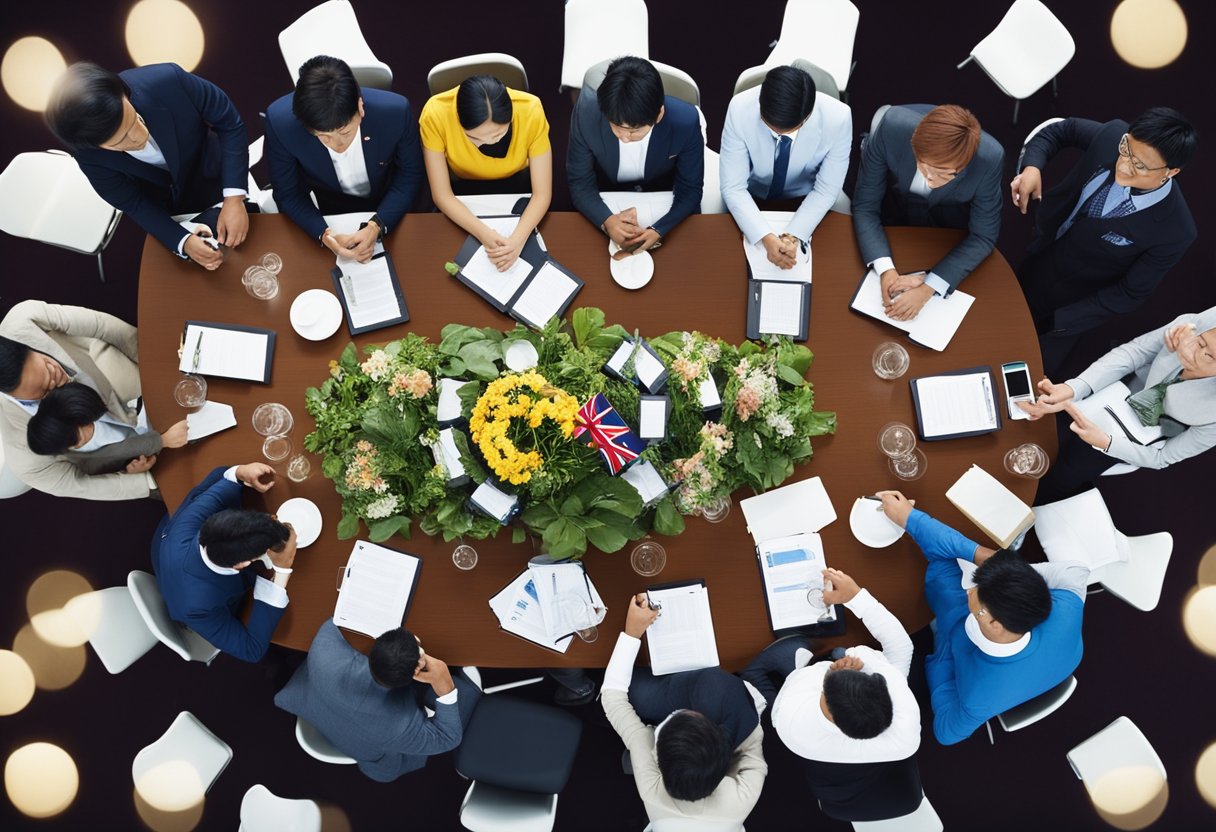KACMUN, which stands for the Korean American Coalition Model United Nations, serves as a dynamic educational platform where Korean American students come together to hone their leadership skills and increase their understanding of global issues. The initiative is not only a testament to the Korean American community’s investment in youth empowerment but also acts as a beacon for cultural understanding and advocacy for social change. Participants benefit from the program’s dual focus on personal growth and the development of vital skills such as public speaking, negotiation, and diplomacy.
By operating as a simulation of the United Nations, KACMUN offers its participants a unique avenue to explore international relations and complex global challenges in a structured setting. This program has established itself as the longest-running endeavor of its kind within the community, fostering a continuous dialogue on various social issues and encouraging Korean American youth to engage with problems that reach beyond their immediate surroundings.
The KACMUN program blends its educational objectives with the practical implications of nurturing future leaders. It achieves this by striking a balance between theoretical knowledge of world affairs and hands-on experience through virtual classroom sessions and in-person conferences. Each year, the program adaptively incorporates both virtual and traditional in-person methods to remain accessible and effective, thus maintaining its pivotal role in shaping informed citizens and change-makers within the Korean American community.
Origins of KACMUN

The Korean American Coalition Model United Nations (KACMUN) has its roots deeply embedded within the context of educational simulations. These simulations are designed to emulate the proceedings of the United Nations. KACMUN reflects a commitment to fostering diplomacy and understanding among students, a tradition consistent with the values of the Korean-American community.
Historical Context
KACMUN originated as a platform for young delegates to engage in global issues, mirroring the diplomatic challenges and protocols of the United Nations. It was established with a clear purpose: to empower students by offering them a stage to debate, develop their oratorical abilities, and understand international relations and treaties.
Significance in the Korean-American Community
Within the Korean-American segment, KACMUN holds a distinctive position. It acts as a conduit for cultural expression and community cohesion, going beyond its educational purposes. The Korean-American community has utilized this platform to enhance the representation of Korean-Americans in global dialogues, thereby enriching the students’ cultural identity and heritage.
Educational Influence
| Aspect | Description |
|---|---|
| Skill Development | Enhances communication, negotiation, and leadership skills among participants. |
| Cultural Awareness | Cultivates an understanding of Korean-American heritage alongside international relations. |
| Networking | Provides opportunities for delegates to form valuable relationships within and beyond their community. |
KACMUN continues to be a celebrated endeavor, generating a circle of informed and adept individuals ready to traverse an interconnected world.
Mission and Vision
The Korean American Coalition Model United Nations (KACMUN) plays a significant role in fostering unity among young Korean Americans. It is dedicated to creating leaders who are equipped to advocate for the community’s interests in political, economic, and societal domains.
The main objectives of KACMUN are:
- Leadership Development: Cultivating skills necessary for leadership among high school students
- Advocacy: Encouraging a deeper understanding of how to effectively represent and advance Korean American issues
- Social Change: Offering a platform for in-depth discussion on pressing global issues, seeking to inspire positive change
The guiding principles of KACMUN form the crux of its mission:
- To enlightened youth on current events, geopolitics, and international relations
- To nurture the ability to connect with peers who share a commitment to social concerns and advocacy
- To provide a setting that enriches debating prowess and encourages diplomatic finesse, fortifying both personal growth and community unity
Through these channels, KACMUN strives to leave an empowering imprint on the participants, equipping them with the tools needed to initiate and navigate social change with confidence and clarity.
KACMUN Structure and Organization

The Korean American Coalition Model United Nations (KACMUN) is structured to simulate the real-world UN framework, offering delegates structured opportunities for debate, diplomacy, and leadership within a Model UN context, supported by a clear organizational hierarchy.
Committees and Leadership
At the core of KACMUN are the committees, each chaired by experienced leaders who are well-versed in Model UN protocols and international relations. These committees mirror the diverse range of UN bodies, such as the Security Council and Human Rights Council. Leadership roles within KACMUN are defined by a strict hierarchy, ensuring efficient decision-making and guidance.
- Chairpersons: They oversee committee sessions and facilitate discussions
- Vice-Chairpersons: Assist chairpersons and step in when necessary
Leaders are responsible for shaping the committee’s agenda, managing debates, and ensuring that procedural rules are followed to the letter.
Delegates and Roles
Delegates are at the heart of the Model UN experience and KACMUN assigns each participant the role of a delegate representing a country or NGO. Delegates prepare draft resolutions, debate key issues, and strive to negotiate solutions that align with their assigned country’s policy.
- Primary Roles: Acting as ambassadors of their assigned country or organization
- Objectives: Advocate for and defend their country’s position, form alliances, and contribute to drafting resolutions
Each delegate is expected to conduct thorough research prior and bring in-depth knowledge to the discussions.
Community Services and Projects
KACMUN extends beyond mere simulations and debates by including community services and projects that aim to impact the Korean-American community positively. The projects are developed to reinforce the principles of diplomacy and cooperation learned in committee sessions.
- Outreach Programs: Aimed at educating and involving the local community in international relations
- Charity Events: These events are designed to support various community needs, exemplifying the United Nations’ Sustainable Development Goals
Through these initiatives, KACMUN encourages delegates to apply their Model UN experience to real-world challenges, fostering a sense of global citizenship and social responsibility.
Educational Impact

Kacmun’s initiatives in the educational sphere significantly influence the academic trajectory and skill set of the youth it serves. Through its structured approach, Kacmun offers a platform for students to excel in various academic and real-world competencies.
Academic Programs
Kacmun presents students with a robust range of academic programs, placing significant emphasis on research and critical analysis skills. Participants engage with rigorous curriculum that challenges their understanding and promotes critical thinking. These programs often intersect with public health and community development, enabling students to apply academic concepts to tangible issues.
- Research Focus: Students partake in research-related activities, fostering an ability to scrutinize data and synthesize crucial findings
- Diverse Subjects: The programs cover a plethora of topics relevant to both local and global contexts, from community health to international relations
Skill Development Workshops
The workshops within Kacmun are tailored to cultivate essential life skills like public speaking, leadership, and negotiation skills. Each session is designed to confront students with real-life scenarios that demand strategic thinking and effective communication.
- Public Speaking: Students have opportunities to engage in debates and presentations, enhancing their confidence and eloquence
- Leadership & Negotiation: Through simulations and group activities, participants develop leadership aptitudes and the ability to negotiate effectively, preparing them for diverse team environments and future career challenges
Cultural Representation and Diversity
Kacmun represents a collective term denoting a rich tapestry of cultural diversity and the exchange of traditions among different communities. This term embodies the celebration of cultural identities and the vibrant array of customs that form the social fabric of societies.
Different cultures around the world contribute to the mosaic of Kacmun through the sharing of languages, traditions, and customs. It highlights how diversity strengthens the collective understanding of humanity. For example:
- Languages: They convey the philosophy and knowledge of a culture, acting as a bridge for cultural exchange
- Traditions: They reinforce a communal sense of belonging and identity
- Customs: They represent the unique practices that communities cherish and maintain
In the context of Kacmun, cultural representation is not just an abstract concept; it plays a pivotal role in how communities interact and understand each other. These interactions lead to a more nuanced appreciation of both the similarities and distinctions that define different cultural identities:
- Similarities may foster unity and empathy among diverse groups
- Differences enable societies to learn from one another, fostering a culture of inclusivity
The ongoing discourse around Kacmun also points to its role in contemporary society, where acknowledging and respecting cultural diversity is imperative. It’s a concept that is both historical and continually evolving, underpinned by the belief that every culture adds a distinct value to the world’s collective heritage.






